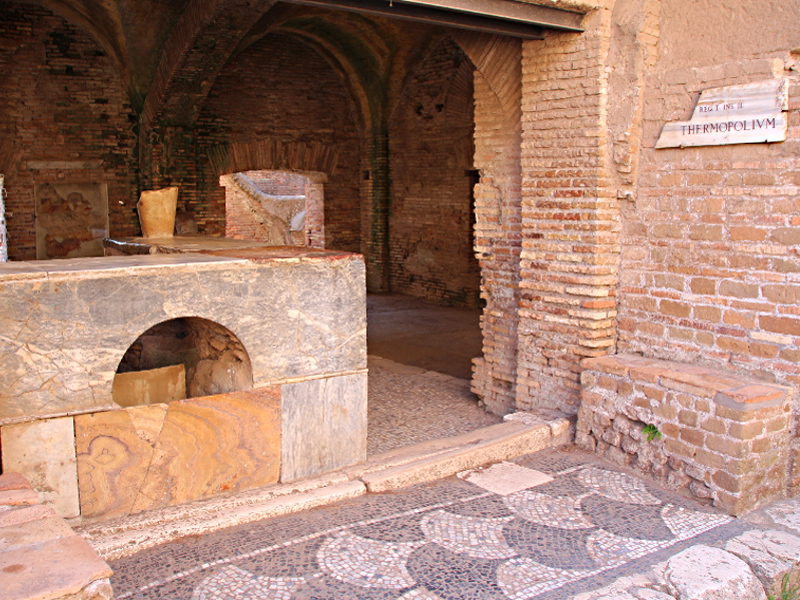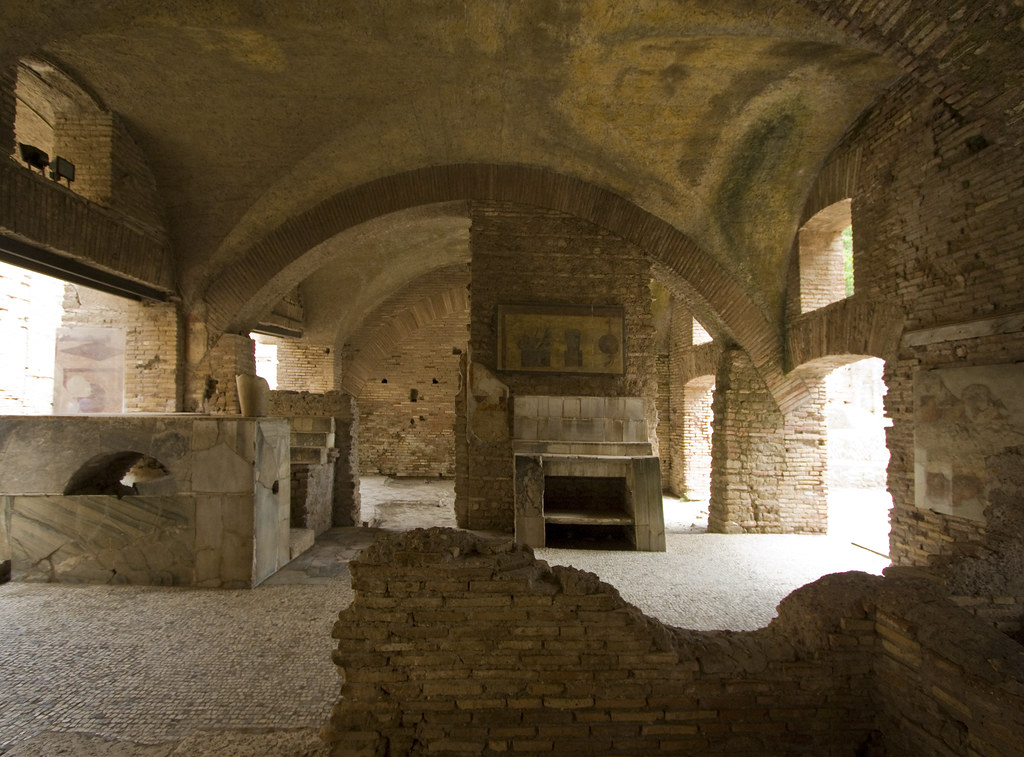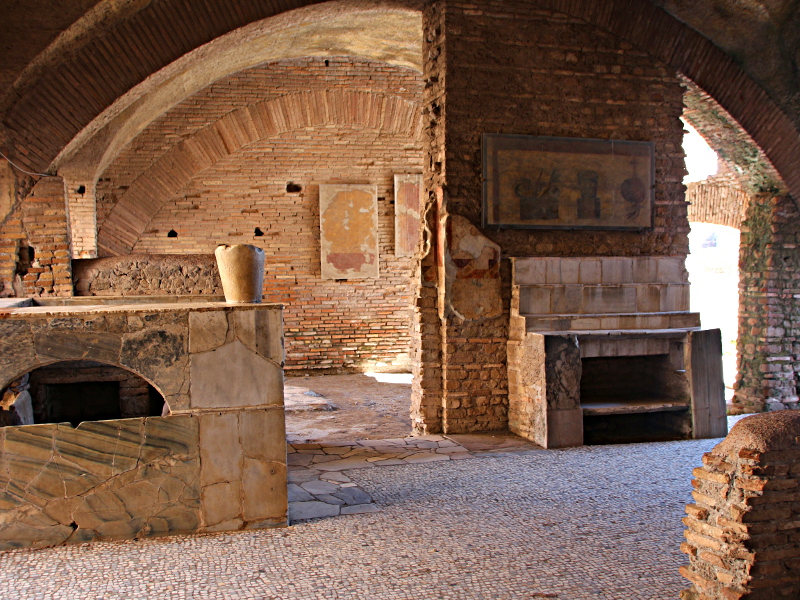Nestled within the ruins of Ostia Antica, the once-thriving ancient port city at the mouth of the Tiber River, lies a fascinating glimpse into daily Roman life: the thermopolia—ancient fast-food establishments that served both locals and travelers in need of a quick meal. These bustling eateries, similar to today’s takeout spots, were integral to Roman urban culture, catering to a wide variety of people who lacked cooking facilities at home, such as the lower class, slaves, and those living in cramped or temporary housing.
Practical Design and Functionality
The layout of a thermopolium was simple yet effective, optimized for the rapid serving of food and drink. Most featured a counter made from stone or masonry, with embedded dolia—large, often decorated, storage jars. These dolia were used to store hot foods like soups, stews, and beverages, which could be quickly served to patrons. The counter, with its accessible design, allowed customers to conveniently choose their food, while the dolia ensured that a variety of options were available for quick consumption.

In a bustling port city like Ostia, where time and convenience were of the essence, these fast-food establishments served as practical solutions to the daily needs of a diverse urban population. Many thermopolia were strategically located along key roads or in areas where foot traffic was high, ensuring they were always in demand.
A Window into Roman Culinary Culture
One of the best-preserved examples of a thermopolium in Ostia Antica showcases its cultural significance through an exquisite fresco. The vibrant mural, still visible today, portrays a wide array of food offerings—such as fish, bread, and wine—which provides fascinating insights into the culinary tastes of ancient Romans. These frescoes not only illustrated the menu but also hinted at the social dynamics of Roman society, where food played an important role in both the private and public spheres.

The fresco exemplifies the diversity and variety of Roman cuisine, with offerings that highlight their love for rich, flavorful dishes. It serves as a reminder that Roman society, much like modern societies, valued the importance of food not just as sustenance, but also as a medium for social connection. These establishments were not merely about filling one’s stomach; they were spaces where people could meet, socialize, and exchange news.
The Social and Practical Impact of Thermopolia
Today, the ruins of Ostia Antica continue to showcase the integral role that thermopolia played in daily life. The preservation of these ancient fast-food shops offers valuable insights into the Roman diet, their urban infrastructure, and their social practices. These establishments highlight the Romans’ understanding of urban planning, with food and social spaces being key elements in creating a connected, functioning city.

The thermopolium not only helped meet the nutritional needs of the urban population but also provided opportunities for socializing, relaxation, and community building. For the ancient Romans, these spots were vital meeting places that fostered communication and unity among diverse groups of people, from the wealthy to the working class. They were not just food vendors, but central hubs in an interconnected community.
Conclusion: Legacy of Roman Innovation
In conclusion, the thermopolia of Ostia Antica serve as a tangible reminder of the Roman ability to blend practicality with community life. These fast-food shops, through their preservation, offer us a rare and invaluable look into the cultural and social heart of one of the greatest empires in history. Through the study of these ancient establishments, we gain a deeper understanding of Roman urban life, their culinary preferences, and the role food played in fostering a sense of community in one of the world’s most influential civilizations.
The legacy of the thermopolium endures today, as it reminds us that food is not just about sustenance, but about connection—something that, even in ancient times, was a key part of daily life. Through these archaeological sites, we continue to uncover the rich history of human innovation, social dynamics, and the shared human experience.

